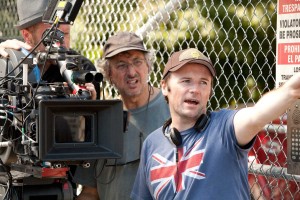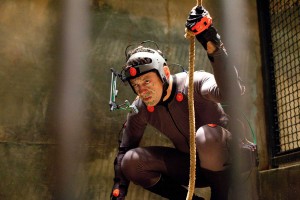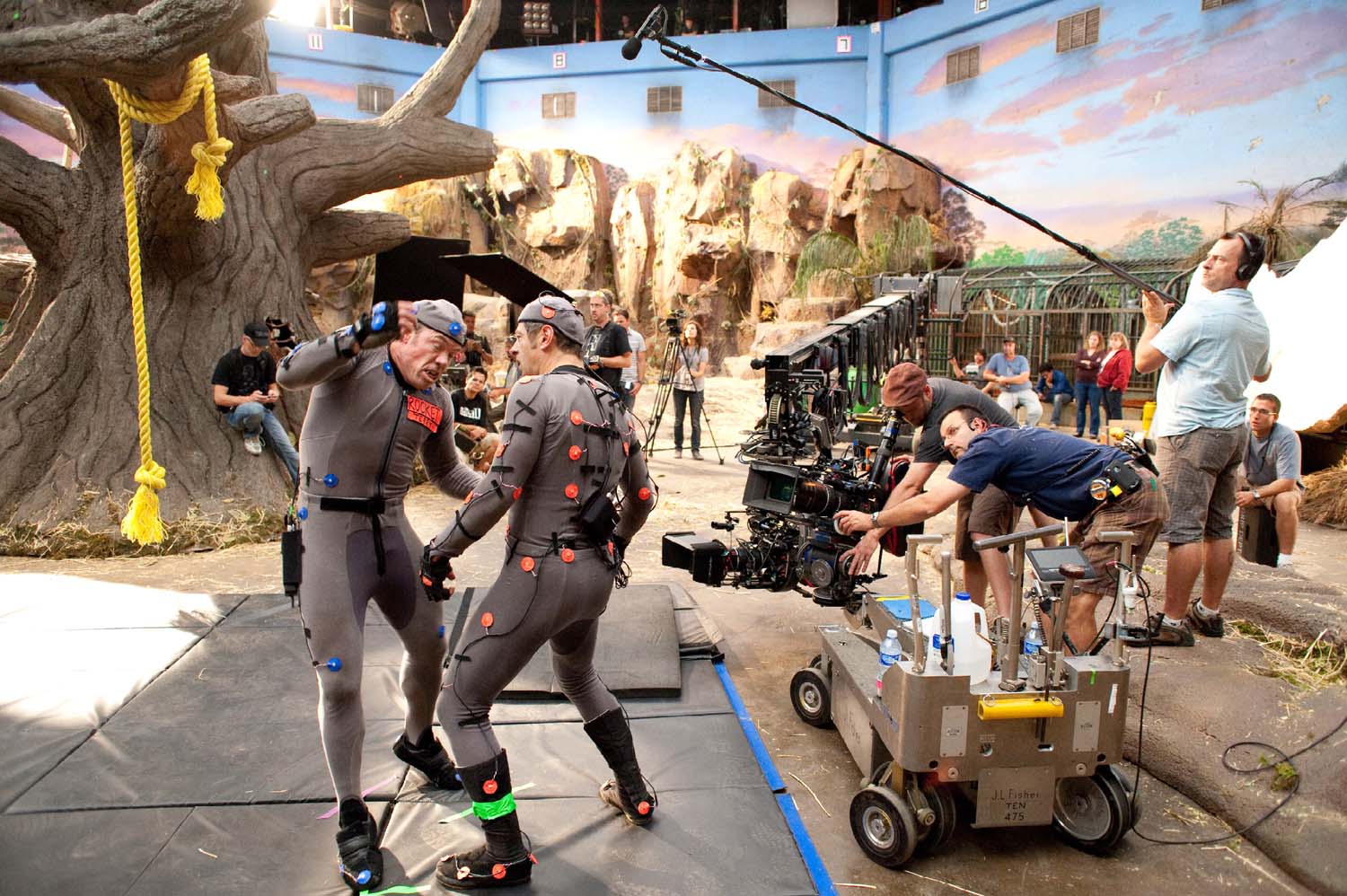
“It started with the design about how Caesar would look,” began director Rupert Wyatt. “That was done by conceptual artist, Aaron Sims. Then we worked developing the look of every ape. We wanted to make them very distinctive in terms of their appearance as well as their mannerisms.”
The creation of the apes was a massive undertaking employing hundreds of animators, modelers, fur and nail designers, performance capture artists, technicians and production staff. Weta Digital was contracted to enhance, not only the appearance, but actually transform a 2D image – a piece of artwork – into a three dimensional model. During the process certain discrepancies came up, so adjustments to the character design had to be made in order to retain the essence of how Caesar or the other apes looked.
Another aspect in developing the various apes was integrating the performance capture into the final characters. “When Andy Serkis performs the character, his performance needs to be properly echoed by the digital model that is Caesar,” Wyatt elaborated. “It is a very time-consuming, laborious process.”
The filmmakers had to take some license in the personification of the apes. Human traits were used as much as possible so that the audience could grow to feel for the apes, but the physical expressions of apes were always a challenge because in some cases the choices for the film were not necessarily what would be natural in the real world. “When an ape growls, that does not necessarily mean he is being aggressive. He might be being submissive,” explained Wyatt. “When, for example a chimpanzee smiles, it is a display of fear. It is not a sign of happiness.”
The ape characters would not have been complete without a voice and language. That task fell to sound designer, Chuck Michaels who is, “Incredibly committed to his work,” according to Wyatt. “The apes had to be as true to life as possible, but at the same time we had to work within our story line and make it as explicit as possible as to what these apes were doing and how they were communicating with each other. That was Chuck’s job. He addressed it by using real ape sounds and our actors.”
Using the actors’ voices posed it’s own challenge since the chest of a chimp is much thicker and more resonant than that of a human, and humans do not have the same vocal chords as the apes. To make the audio work, the sound team needed to process the recordings, including modulating the pitch. “There was this wonderful little gizmo that we could work with in the sound booth live. We could have the actor do the ADR and almost immediately play it back at half speed and change the pitch to the vocalization of the ape,” said Wyatt. “A lot of work goes into that because you have to be very careful not to make them sound squeaky or too ominous. That’s where Chuck’s ability really came in.”
Conrad Buff IV was the principal editor. Mark Goldblatt worked with him on various sequences and handled the pre-viz. The whole editing process was extremely challenging because many of the ape shots had to be turned over to Weta well in advance of a final cut of the picture so that the time-consuming VFX shots could be finished. “That created all sorts of problems deciding on shots,” Wyatt shared. “Are they the absolute shots that we’re going to want to use in the finished film? In a way they have to be because Weta can’t start working on a shot and then change the take.”

Although it was not an ideal process, Wyatt contends that it was the nature of the beast if the production wanted to make their delivery date for the picture’s release. “Having Conrad and Mark work together was massively important,” he continued. “What was wonderful about them is they understood very quickly that we had to attack the film from an editorial point of view much like a lump of clay and really work very fast to create the basic shape and then hone it from there.”
Because of technology advances it was possible to shoot all of the apes live on stage or on location over the course of the 12-week shoot, although there were some additional shooting and performance capture pick-ups in New Zealand at Weta. As a team Wyatt, cinematographer Andrew Lesnie and the second unit team lead by director, Brian Smrz, tried to create as much as possible in camera. Lesnie’s documentary background made him very flexible during the shoot. Because of the tight schedule, the company normally shot with two cameras. “It’s always great to have a B camera that will allow you to grab the happy accidents and things like that,” remarked Wyatt. “It allows me to focus and drive a scene with the use of the A camera, and then allow a bit more freedom with the B camera to rove around a bit and pick things up that can be very useful in the edit.”
Although there were a large amount of visual effects in the film, the company chose to film as much as possible in a natural environment. Only 2-3% of the sequences had anything to do with digital environments, although there were digital set extensions of certain stage builds such as the Golden Gate Bridge. “We shot on location or on physical sets the vast majority of the time,” said Wyatt. “So Claude Paré, our production designer was key in terms of that design.” Costumes worn by Caesar were by costume designer, Renée April. Ultimately Weta took her designs and digitally created his wardrobe, including the signature red sweater.
Wyatt commented, “It’s a hand-off between VFX artists and on-set production crew. The choice lies in how much responsibility you want to put on the digital side of things or on the physical side of things.” In terms of the digital advances, Wyatt cautioned that digital artists strive for perfection, but the real world is flawed. It is not perfect. “For me as a filmmaker it is all about finding the ideal marriage between the two, so an audience will believe. If something looks too clean or too perfect, it loses its soul.”






